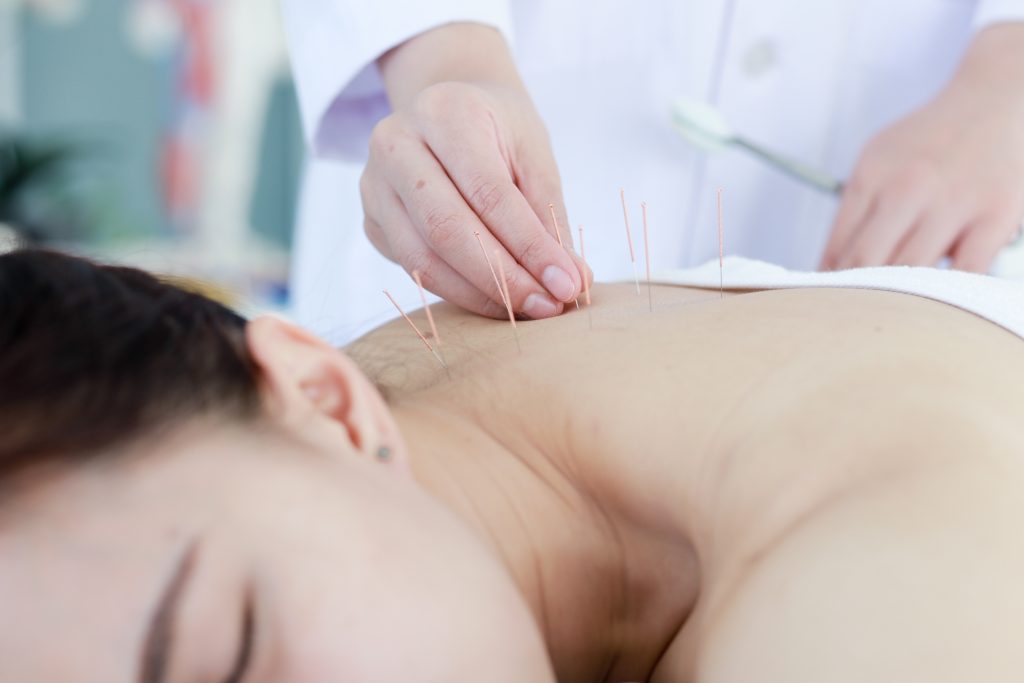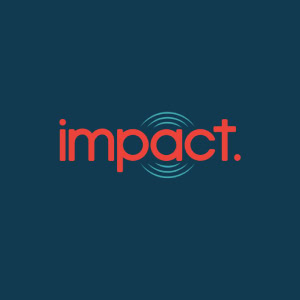What Conditions Respond Well to Dry Needling?
May 23, 2024
By Nick Lorem

Dry needling is a technique used by trained practitioners to target tight or sensitive areas in muscles. These areas are often referred to as myofascial trigger points. It involves the insertion of thin needles into these specific sites, aiming to release tension, restore muscle function, and help reduce pain. While it may appear similar to acupuncture, dry needling is grounded in Western medicine principles. Physical therapists or myotherapists most often use it as part of a wider pain management plan.
There’s growing interested in dry needling across Australia, especially among patients dealing with muscle pain, sports injuries, or chronic musculoskeletal issues. From elite athletes to office workers experiencing neck pain or muscle tightness, more people are asking whether this treatment might help. Many are seeking relief for conditions that may respond to shockwave therapy or similar hands-on modalities.
This blog provides a general guide to how dry needling may be used in clinical settings. It draws on commonly observed applications in physiotherapy and current scientific literature. However, it is not intended as a personal recommendation. Each patient’s situation is unique. The effectiveness of dry needling therapy depends on factors like the underlying condition, treatment goals, and overall health.
Summary of the Content:
- Dry needling is commonly used in physiotherapy and myotherapy to assist with relieving pain, restoring muscle function, and improving mobility.
- The technique involves inserting thin needles into specific trigger points to release tension, reduce sensitivity, and stimulate a local twitch response.
- It differs from acupuncture by focusing on musculoskeletal and neuromuscular pain rather than traditional energy pathways.
- Common concerns managed with dry needling include neck and shoulder tension, chronic lower back discomfort, hip tightness, and sports-related muscle strain.
- It may be included in a broader treatment plan to help manage muscle pain, improve range of motion, and support recovery.
- Emerging applications such as TMJ discomfort, plantar fasciitis, and postural syndromes are still under study in some clinical settings.
- Dry needling may not be suitable for everyone, especially during early pregnancy or with certain medical conditions.
- Patients often compare this approach with others, including conditions that may respond to shockwave therapy, to inform treatment choices.
Understanding Dry Needling in Clinical Practice
While dry needling and acupuncture involve the insertion of thin needles into the body, they’re fundamentally different in philosophy and application. Dry needling treatment is based on Western anatomical and neurophysiological models. It targets dysfunctional muscle trigger points. In contrast, acupuncture is rooted in traditional Chinese medicine. It aims to restore energy flow or “Qi,” by stimulating meridian points.
In modern physiotherapy and myotherapy, dry needling is typically used to support recovery from muscle pain, sports injuries, and chronic pain conditions. Practitioners may incorporate it alongside manual therapy, exercise-based rehabilitation, or physical therapy modalities. The aim is not only to reduce pain but also to help improve range of motion, muscle function, and overall movement efficiency.
The underlying mechanism of dry needling often involves stimulating specific trigger points to provoke a local twitch response. This response may help with releasing trigger points, improving blood circulation, and modulating pain signals via the spinal cord. These effects contribute to muscle relaxation, decreased muscle spasm, and improved tolerance to movement. Some sessions may also involve electrical stimulation for enhanced effect.
Dry needling addresses connective tissue restrictions and neuromuscular pain. It offers a practical option for managing musculoskeletal issues when guided by a practitioner’s comprehensive assessment.
Commonly Addressed Musculoskeletal Conditions
Dry needling is most often applied in addressing musculoskeletal and neuromuscular pain. It’s typically part of a broader therapeutic approach aimed at improving muscle function, managing chronic pain, and restoring range of motion. While results can vary, clinical use has shown that dry needling may be effective for several common conditions. These include muscular tension, muscle spasms, and trigger point-related dysfunctions that impact daily activities and physical performance. Below are some of the frequently addressed presentations in clinical practice.
Myofascial Trigger Point Pain
Myofascial pain refers to discomfort arising from sensitive or overactive muscle trigger points—often felt as tight bands or knots under the skin. These points may lead to muscle pain, restricted movement, or referred discomfort in other areas. Trigger point dry needling is believed to work by stimulating the affected region and provoking a local twitch response. The process may assist in releasing trigger points and decreasing local sensitivity. This technique may also help interrupt pain signals and improve circulation to the area.
Neck and Shoulder Tension
Dry needling is commonly used to target the upper trapezius, levator scapulae, and deep neck muscles. These areas often hold muscle tightness related to posture, stress, or desk-based work. These muscles can become overworked or shortened, contributing to neck pain, limited motion, and headaches. Inserting needles into these areas may help release tension, improve blood flow, and reduce discomfort associated with strain and muscular overload.
Tension Headaches and Cervicogenic Pain
Some practitioners apply dry needling to the occipital muscles at the base of the skull when managing certain types of headaches. This may assist in reducing muscle tension and referral pain in people whose headaches originate from the neck. However, responses vary from person to person, and a tailored approach based on history and presentation is always necessary. While dry needling may relieve pain, individual factors influence the results, and a trained therapist is the ideal person to evaluate them.
Chronic Lower Back Discomfort
People with long-standing lower back pain may experience relief with dry needling. It is used to address generalised soft tissue tension or discomfort caused by overactive paraspinal muscles. These muscles often become irritated due to prolonged postures, overuse, or stress. Dry needling does not address spinal structures directly. However, it may help ease associated muscle strains and support movement as part of a larger physical therapy program.
Hip and Gluteal Region Tension
Deep gluteal tension, including issues like piriformis syndrome, may respond to dry needling when targeting the tight structures around the hips. This discomfort is common in people with sedentary jobs or imbalanced movement patterns. It can feel like a dull ache in the buttock or thigh region. Releasing tight bands in the gluteals may improve blood circulation, alleviate pressure on surrounding tissues, and support more efficient movement.
Sports-Related Muscle Irritation or Tightness
High-performance athletes often experience muscle irritation or tightness in the hamstrings, calves, or quadriceps. As part of a recovery plan, dry needling may assist in managing sports injuries. It can help the body recover after intense physical activity. Used alongside exercise prescription, dry needling may contribute to improved mobility, decreased tightness, and enhanced recovery. However, this technique is usually one element of a broader treatment plan.
Emerging Uses Still Under Study
Dry needling is more commonly applied for muscle-related pain and movement limitations. However, emerging evidence is exploring its potential in less conventional areas. It’s important to note that the following applications are still undergoing clinical investigation. High-level studies have not fully validated these uses yet, and individual responses may vary. Any consideration for dry needling in these areas should be part of a comprehensive assessment by a qualified health practitioner.
Jaw and TMJ Discomfort
Jaw pain, including symptoms related to temporomandibular joint (TMJ) dysfunction, can be complex. It often involves muscle tension in the masseter, temporalis, or pterygoid muscles. Some clinicians have started exploring dry needling therapy in this area as a way to address muscular contribution to TMJ pain. Early findings suggest that releasing these overactive areas might help reduce pain or improve jaw mobility in selected cases. However, due to the sensitivity of the region and variability in presentation, this use remains experimental.
Plantar Fasciitis
Plantar fasciitis is commonly associated with heel pain. This pain is often caused by irritation of the plantar fascia from repetitive strain or poor foot mechanics. In some clinical settings, trigger point dry needling has been applied to address surrounding muscular imbalances. These include tight calf or intrinsic foot muscles that may influence load distribution. This approach may contribute to pain management, particularly when combined with exercise prescription and stretching. However, more high-quality studies are needed to confirm its long-term effectiveness.
Postural Strain Syndromes
Postural syndromes involve a pattern of muscle tightness, fatigue, or neuromuscular pain. They often result from sustained or repetitive postures and commonly affect desk workers or students. Postural syndromes involve a pattern of muscle tightness, fatigue, or neuromuscular pain. They often result from sustained or repetitive postures and commonly affect desk workers or students. Clinical trials and observational research are still refining these applications, despite the promising evidence.
Disclaimer: These areas are being explored in some clinical settings. More research is needed to understand their long-term outcomes.
When Dry Needling May Not Be Suitable
Dry needling is a valuable tool in managing musculoskeletal pain, but it’s not appropriate for everyone. Below are common situations where this treatment may not be suitable. You should discuss these considerations with a qualified health practitioner as part of a comprehensive assessment.
- Fear of needles or needle phobia
People with a strong aversion to needles may find dry needling distressing. Since the technique relies on inserting thin needles into soft tissue, it may cause unnecessary anxiety for those with needle-related fears. Alternative pain-relief methods may be better suited in these cases. - Bleeding disorders or anticoagulant use
People with bleeding conditions, such as haemophilia, or those taking blood thinners, are more prone to bruising. They may also experience prolonged bleeding after dry needling. Practitioners will often require clearance from your GP or specialist before proceeding. - Pregnancy without medical clearance
Some practitioners are trained to manage pregnant patients. However, dry needling is typically avoided in the first trimester without explicit medical approval. Safety for both mother and baby is the top priority in these cases. - Skin infections or open wounds
If you have an active skin infection, rash, or open wound at or near the treatment area, dry needling should be postponed. Needling through compromised skin may introduce bacteria and increase infection risk. - Low pain tolerance or vasovagal symptoms
Some people experience fainting, dizziness, or nausea in response to needles (vasovagal response). Practitioners will assess your comfort levels and may recommend other modalities if dry needling could trigger an adverse reaction. - Active cancer or sensitive medical implants
People undergoing cancer treatment may not be suitable for dry needling in certain areas. The same applies to those with devices like pacemakers or deep brain stimulators. This situation is assessed on a case-by-case basis, often in coordination with a broader medical team. - Neurological conditions affecting muscle control
Conditions such as multiple sclerosis or spinal cord injury may alter how your muscles and nerves respond to needling. A practitioner will carefully evaluate whether this technique fits your treatment plan without causing unintended effects.
A personalised evaluation prioritises your safety, comfort, and treatment outcomes. Always speak with a qualified professional before beginning any dry needling treatment.
Why a Personalised Assessment Matters
The suitability of dry needling varies depending on your unique health profile. A trained practitioner will take the time to understand your condition, overall health, and goals before including dry needling in your care.
- Assessment based on your history and presentation
A practitioner will start by gathering details about your medical history, lifestyle factors, past injuries, and areas of concern. They will also consider current muscle pain, tension, or functional limitations. This forms the foundation for making an informed choice about which techniques may benefit you. - Evaluation tailored to your movement goals
Rather than focusing on a single symptom, your provider will evaluate how pain or muscle tightness affects your movement. They will also assess its impact on comfort and daily activity. From there, they may plan treatment around dry needling alongside other therapies, such as exercise prescriptions or manual therapy. - No guarantees, just informed planning
Dry needling offers potential benefits, such as helping to relieve pain or restore muscle function. A personalised assessment helps achieve that expectations are realistic. Your provider will assess your response over time and adjust your care plan accordingly. - Safety first
A tailored consultation allows the clinician to identify any contraindications or precautions before beginning treatment. These may include sensitivity to thin needles, health conditions, or specific areas to avoid. This protects your well-being and supports a positive outcome.
Ultimately, the goal is to provide care that’s specific to you—not just the condition. A comprehensive assessment helps determine whether dry needling is safe, appropriate, and suitable as part of your broader recovery or wellness plan.

Final Thoughts
Dry needling is a commonly used technique in physiotherapy and myotherapy. It may assist in managing muscle tightness, neuromuscular pain, and restricted range of motion. It is often included in broader treatment plans. These may address concerns such as neck pain, chronic lower back discomfort, sports-related muscle strain, and trigger point sensitivity.
For patients exploring different treatment options, it may be helpful to compare conditions that may respond to shockwave therapy. Some of these may also benefit from dry needling, depending on individual needs. The mechanisms differ between these treatments. However, both are often used in clinical settings to support recovery from musculoskeletal issues, depending on the individual’s goals and physical presentation.
A personalised, comprehensive assessment by a qualified health professional can help determine whether dry needling is appropriate for you. Suitability varies, and the decision should always be based on a thorough understanding of your health status, preferences, and overall care plan.
This blog provides general information about dry needling and its clinical applications. It is not a substitute for professional advice. Treatment suitability varies and should be determined by a qualified health provider.

